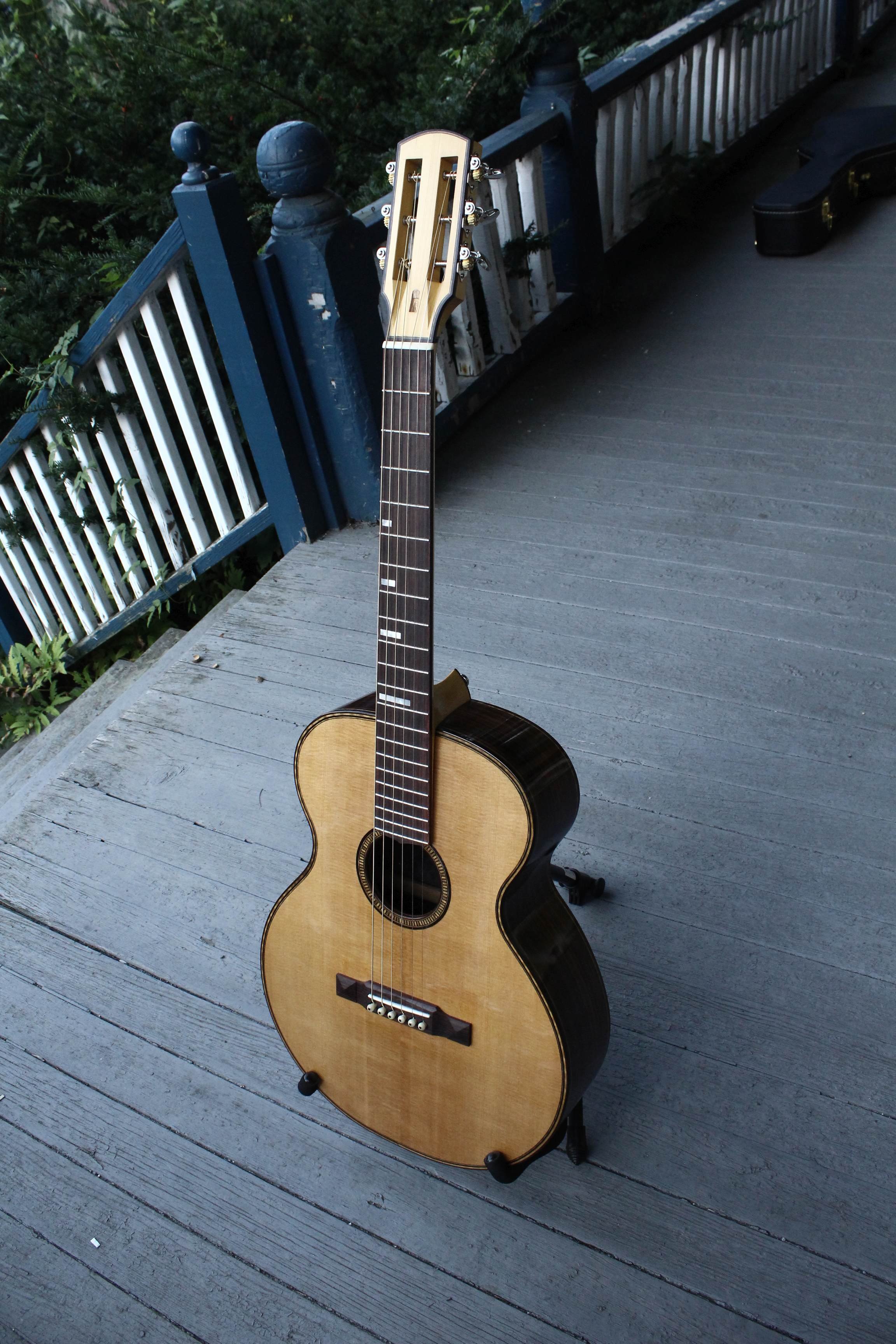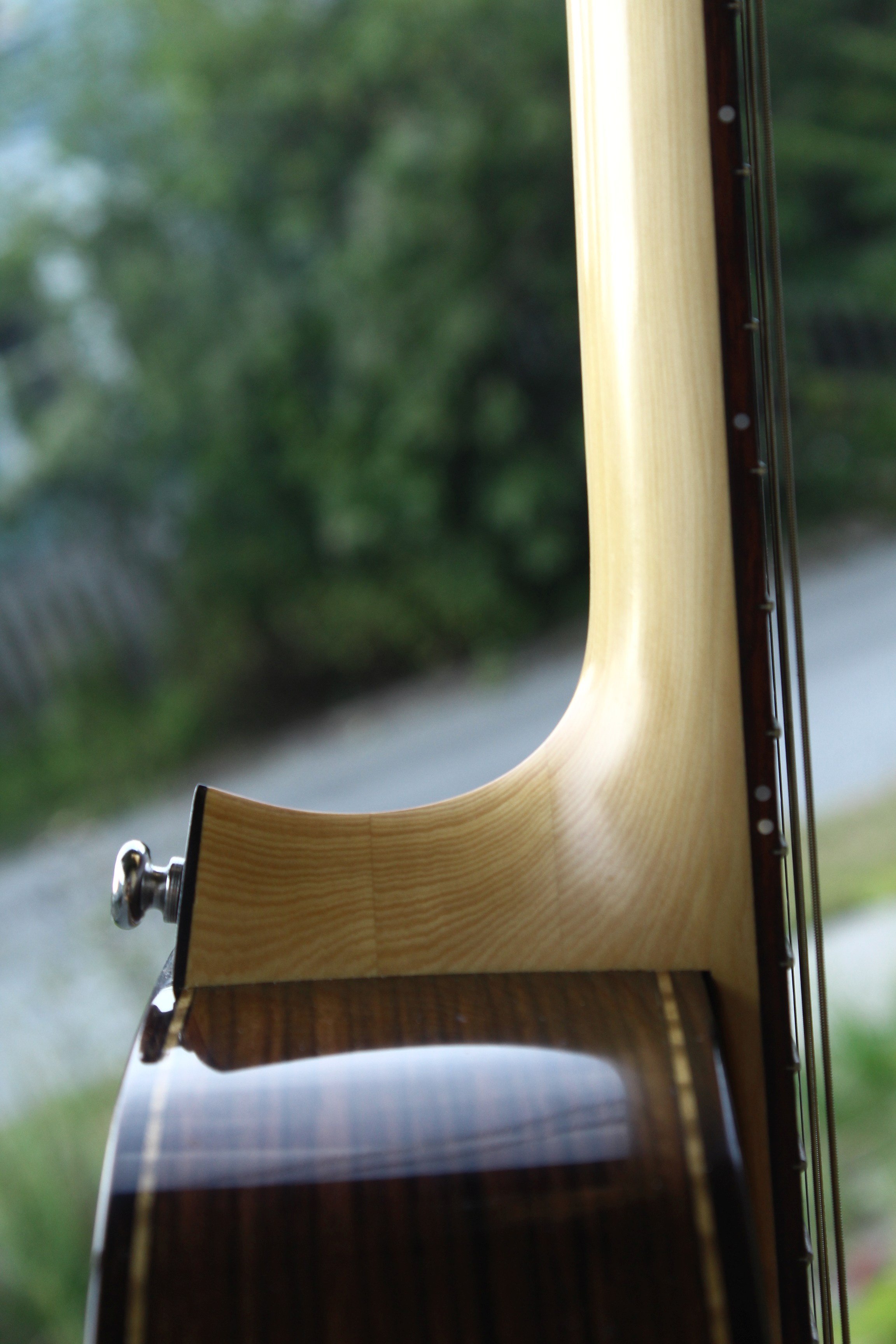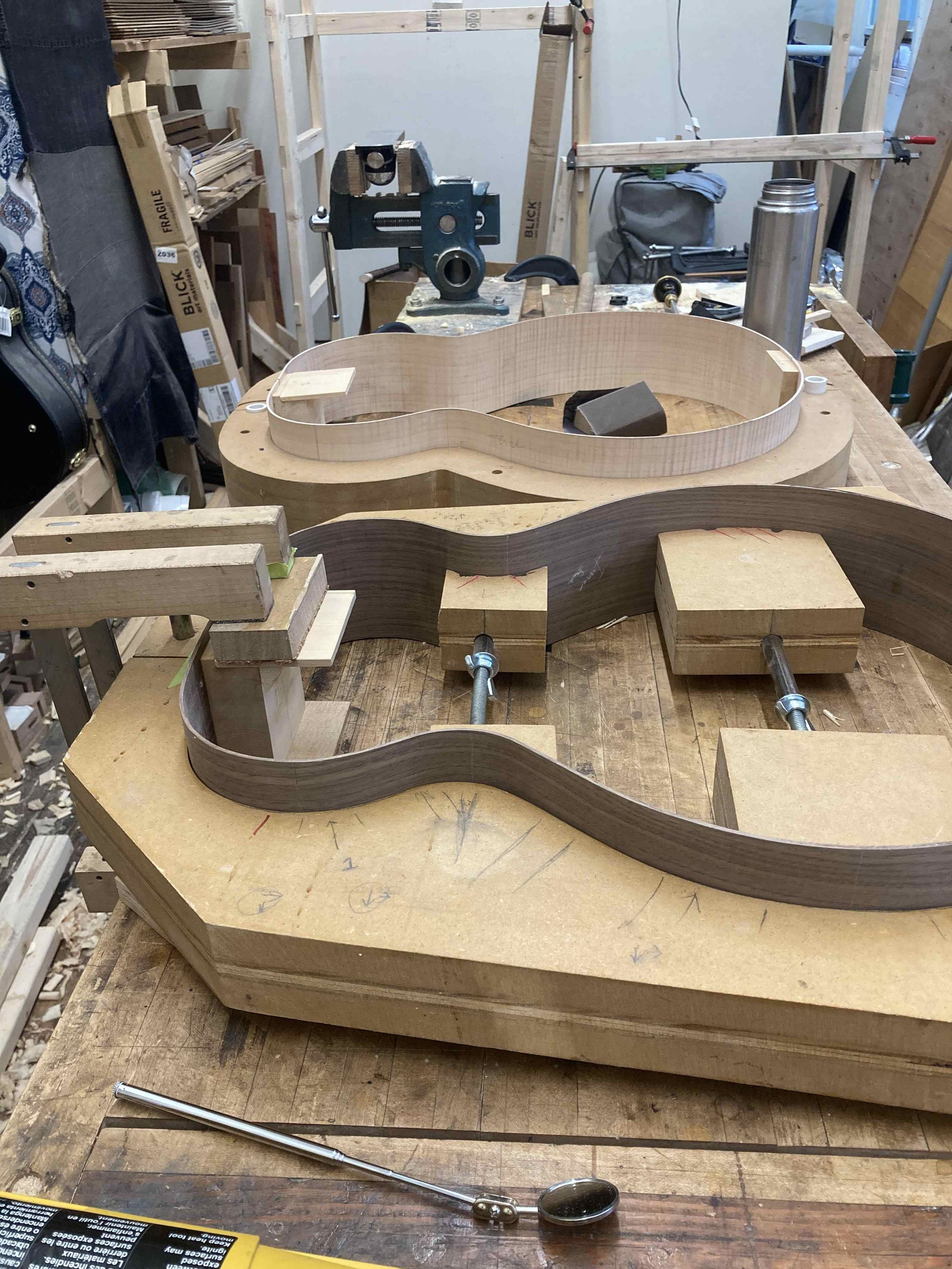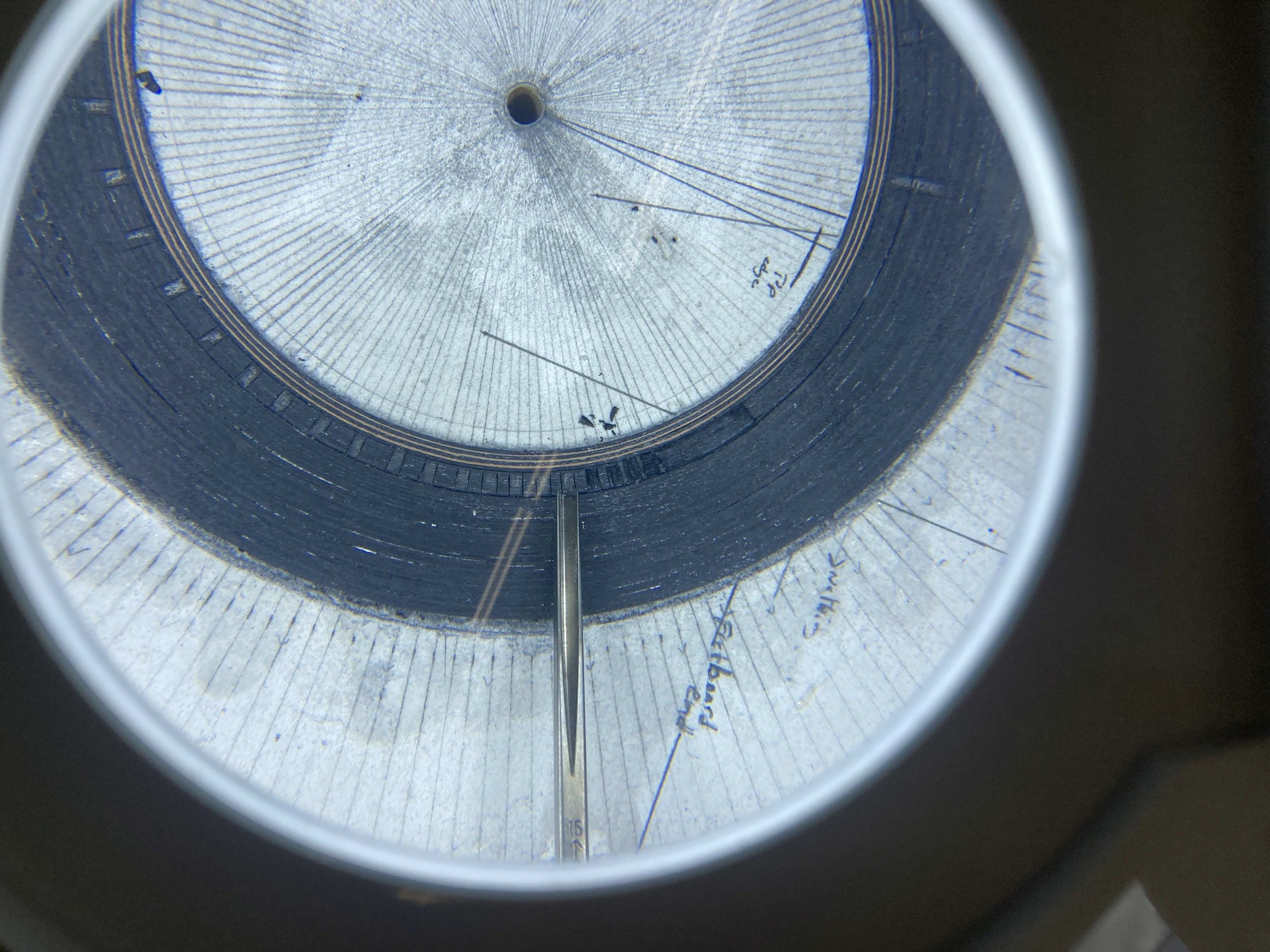2 Years in Vermont or a Cantilever update
Fall has come to Vermont once again (and left, I am a little slow on these updates), it still feels like it should be Spring, and I realize I have not made one of these updates in a while, so here goes…
When I left off last I was still building this cantilever prototype, it was a different time in many ways for me. I finished finishing this guitar a little over a year ago. I glued the bridge on and strung it up. I promptly removed the bridge, after a suitable couple week cooling off period, and refinished the middle of the top where the bridge had been placed, one fret distance off. To be frank I feel a bit sheepish to bring this episode up, but it was a major shop happening and this is indeed a shop update. I do not strive to be a polished internet guitar guru the way so much internet marketing works. I am just a guy building nice guitars, and trying to make each one nicer than the last. And I would rather be honest than slick any day.
Sometimes it is best not to work through periods of profound personal turmoil, but sometimes you do anyway and you get a lesson in french polish repair out of the experience, among other things. I measured thrice, I thought about the measurement some number less than thrice, being rather distracted, and wound up with a guitar fretted for one scale length with a bridge placed at a different scale length. If you want to see some of the later construction photos, including some shots of the french polish repair you can find them on my instagram where you can also see some photos of the headstock binding process (face and the whole birds beak joint). If you want somewhat more frequent glimpses of what is going on in my shop and you use instagram, consider giving me a follow.
So, about the end of January 2022, repairs done and new bridge made and placed, I began the count down to making a final call on the design. The timeline was roughly 6 months on the short end of the waiting period, but I will be holding off until the dry winter air fully settles in here and I have time to go over the guitar with care and attention. Depending on your geography, you may or may not know how wet Vermont was this summer and while my shop is well humidity controlled my apartment has been a bit swampy. I was not playing guitar for a bit at the start of summer and when I took it out to start again the guitar had blown up like a balloon.
Its been living with silica beads suspended in the sound hole since, changed once a week or so. It only took a couple weeks to return to a playable state, but it is clear the top is still holding excess moisture (you can see it deform around the tail block where it is unable to dome from moisture expansion) and I would rather evaluate it for any possible issues after it has returned to a more neutral state. If you live in a humid environment and do not have silica beads, I would highly recommend them. I know I am not the only person in Brattleboro whose guitar suffered this summer and they are reusable multiple times, you just have to bake them dry. I will certainly be putting them in my guitar again when the humidity starts to rise next spring.
What I can evaluate at this point however is the finish, having played the guitar for most of the last ~eleven months and it being over a year since the french polish on the back and sides was completed. The body is all shellac and only shellac. The pores are filled with shellac and rosewood has sizeable pores. I have learned and employed many methods of french polish, and this one was by far the least labor intensive. Though it was about two months from beginning to end, it was not many more hours than I would spend on a lacquer finish and the initial results were far better than any nitro finish I have ever done.
It is nice to see that about a year in the finish is still looking fantastic, and while the shellac has shrank back somewhat like any thin solvent finish will, nitro included, it is unnoticeable without close and intentional scrutiny.
I snapped a few photos back in late October to share in this update, and while I am holding off on making a sound demo of it until later in the winter, I can also say I think it sounds great. It has fully alleviated my fears of the compound radius top negatively affecting the tone.
I am really enjoying how unassuming the yellow cedar is compared to the flashier Spanish cedar that tends to be my go to neck wood. It seems to be a fine neck wood and I will be looking forward to using it more in the future. I am also, unsurprisingly, happy with the oil varnish finish I used on the neck. I have used it in the past and definitely prefer the feel of the finish to a lacquer neck. Being intended for gun stocks I have no concerns about its durability for use on a guitar.
While I wait to make a final evaluation of the cantilever guitar I happily have plenty of other work to keep me busy. I have three guitars in process currently including the two above, an rb-000 in maple and my first ever classical guitar, also above. Additionally I am currently building a walnut rb-00 for a local musician that I am very excited to complete and write about in a future newsletter, but for now I will leave as a little teaser a few shots of the rosette coming together.
The rosette is a scale representation of the notes from C0 to C5 by their hertz frequency, I really like the idea for it and also deeply underestimated how finicky it would be to pull off. It is in the top now however and I am a little happy to have underestimated it as I am not sure I would have taken it on if I had anticipated the full extent of trouble involved in making it work. .
And with that I am going to leave off this update, thanks for checking in with the shop today, I will be back with another update soon. In the meantime, look around the site, I have made a few updates, and consider ordering a new guitar for the new year. I have room for a few more builds in 2024.














